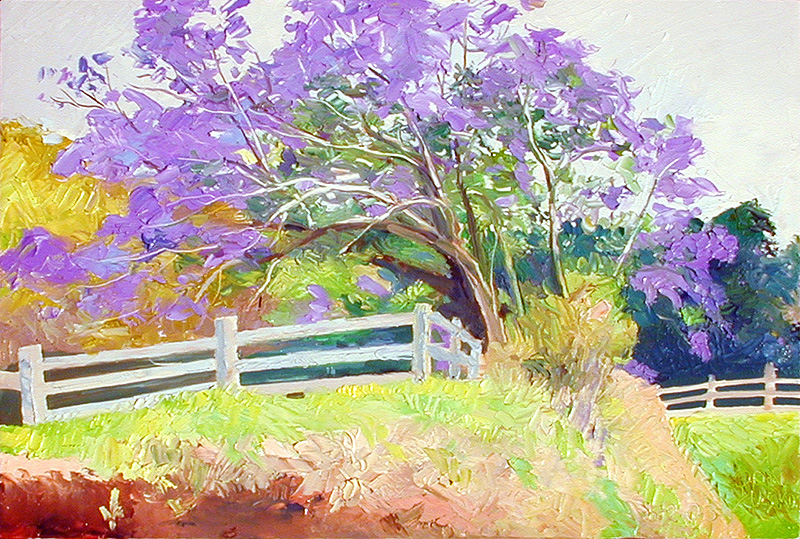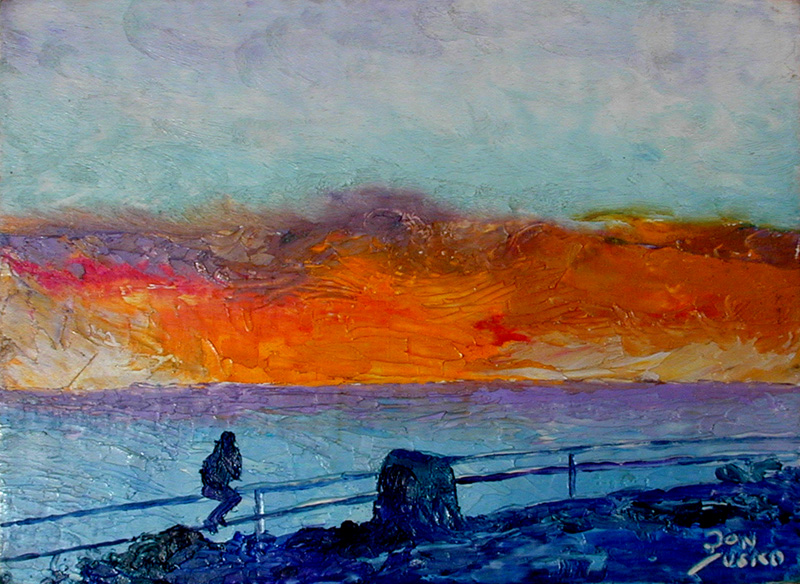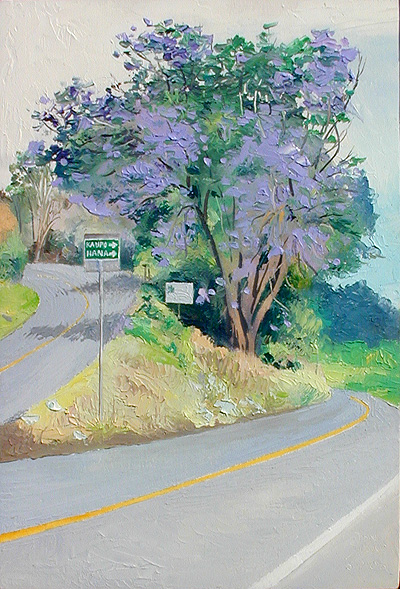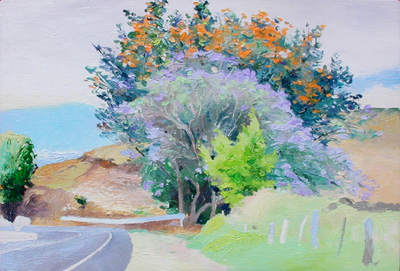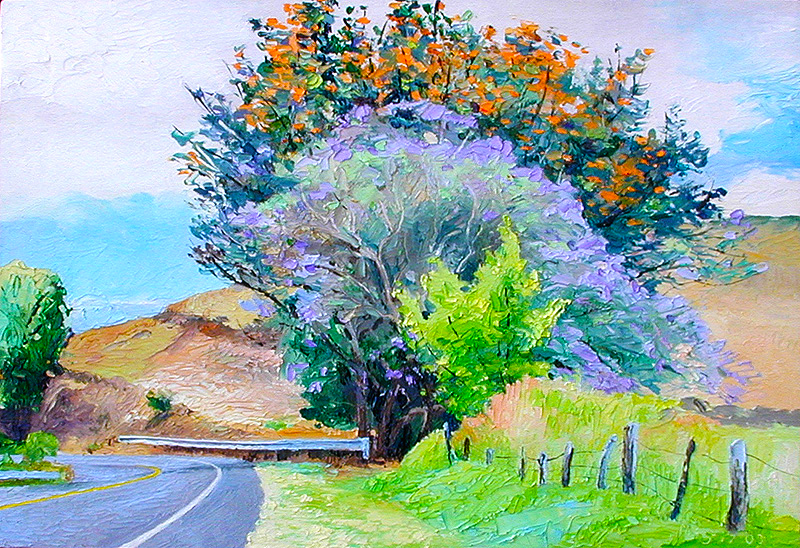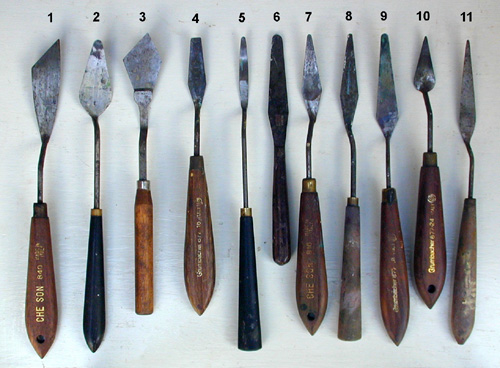
These painting images are about 1:1, they were photographed in the morning light because it's the whitest.
My 5" x 3/4" spreading blade was out for the picture. It's for spreading gesso and making paint.
My #9 is a Grumbacher Style 877, size 18. The end is about a 1/4 inch diameter round and 3 inches long. A smaller blade would have a 1/8 " diameter half circle at the tip, like my #8 or my unbroken #4 used to have. If you hold the painting in your hand, it's easier to get the blade in the right position for spreading the paint, a skill that you will be in control of in a short time. It's nice to have a long, skinny, parallel edged blade too, like my # 5. The #5 has LOEW CORNELL J-15 Japan stamped into the black handle,
Pre-mixing colors is important for a knife painter. Start with enough white squeezed out to cover the whole painting support. Divide the white paint up into the amount of colors you will pre-mix plus their tints. It is very important to use the real color wheel when mixing colors.
The Red-Yellow-Blue color wheel will not work because the primary colors are wrong and the secondary colors are wrong and the complements and split-complements are wrong. The RGB/YMC won't work either, it makes it's darker values incorrectly by using black pigment to match subtracting light.
7.5x5.5, oil, #892, 4-29-03
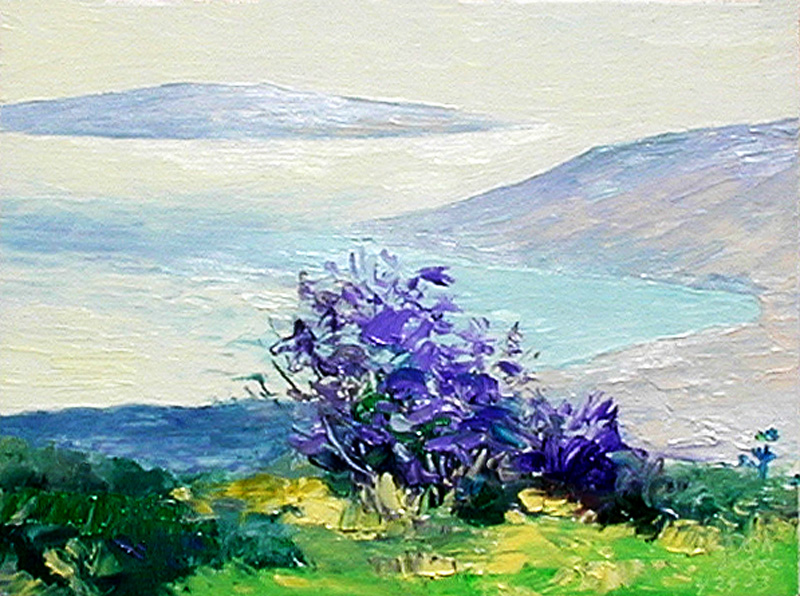
|

